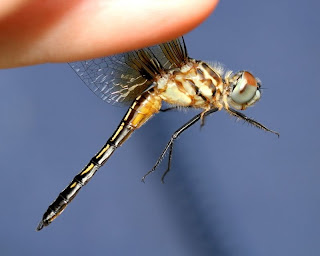Last Friday the Royal Botanical Gardens in Burlington held its annual dragonfly count.
 |
Blue Dasher (♀)
|
I have participated on other odonate counts in the past (e.g. Carden Alvar and Pelee Island) but its nice to be able to do one a little closer to home.
 |
| Blue Dasher (♀) |
Close-up photos reveal a lot of interesting detail, which is fun.
 |
Unicorn Clubtail (♂)
|
Many of the dragonflies we encountered had only recently emerged from their larval phase; wings are not yet stiff and body parts have not hardened completely.
 |
| Unicorn Clubtail (♂) |
 |
| Unicorn Clubtail (♂) |
Males and females of the same species often appear quite different, especially with respect to coloration.
 |
| Common Whitetail (♀) |
 |
| Common Whitetail (♂) |

